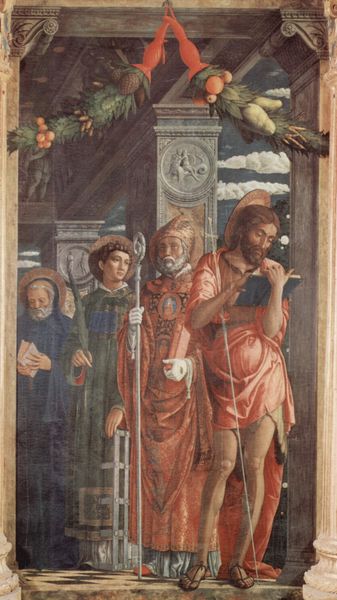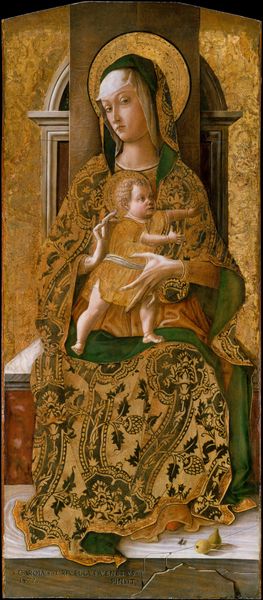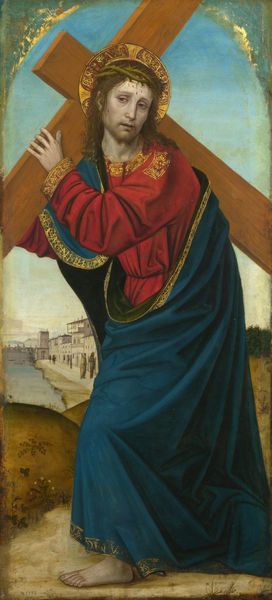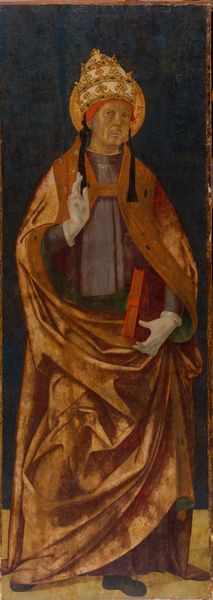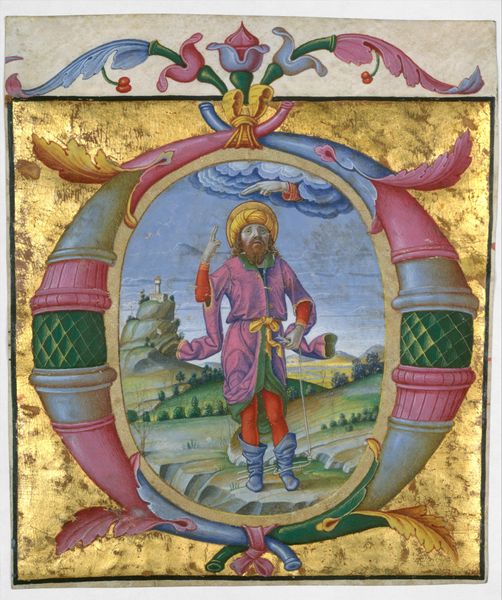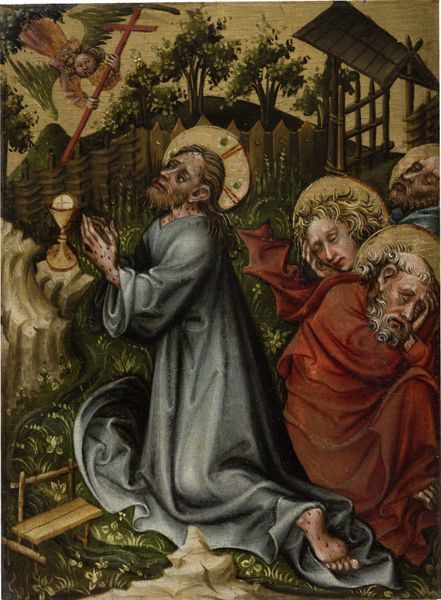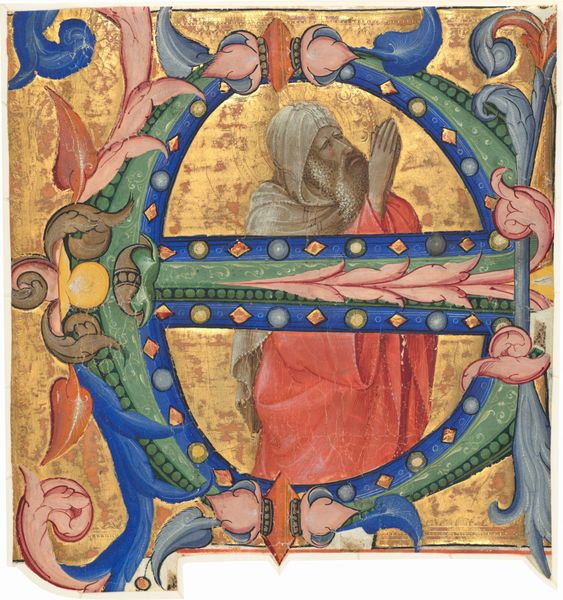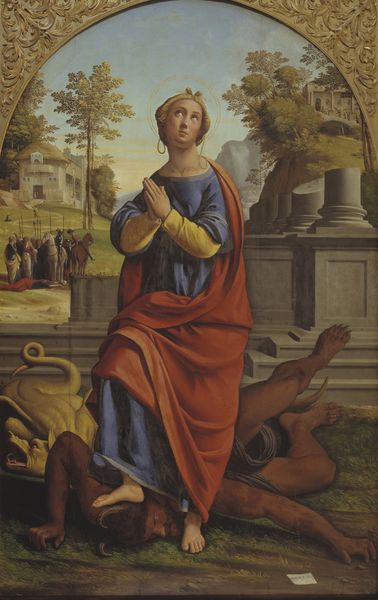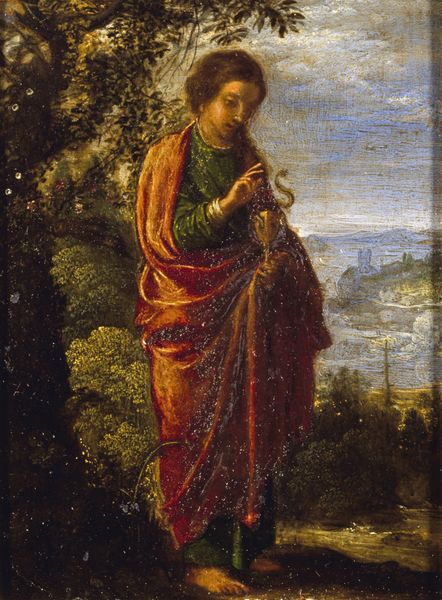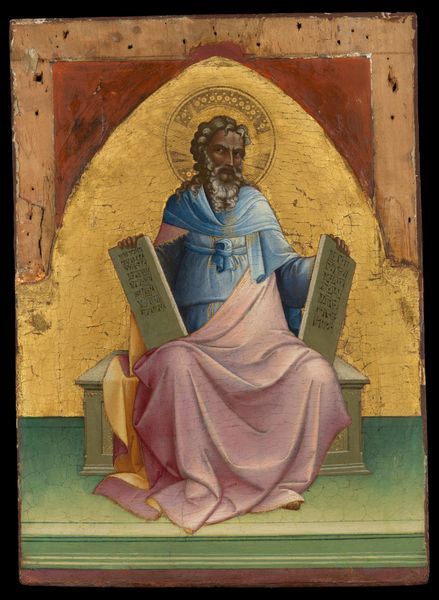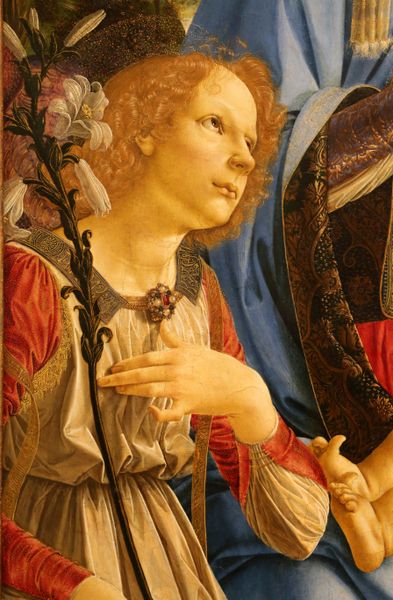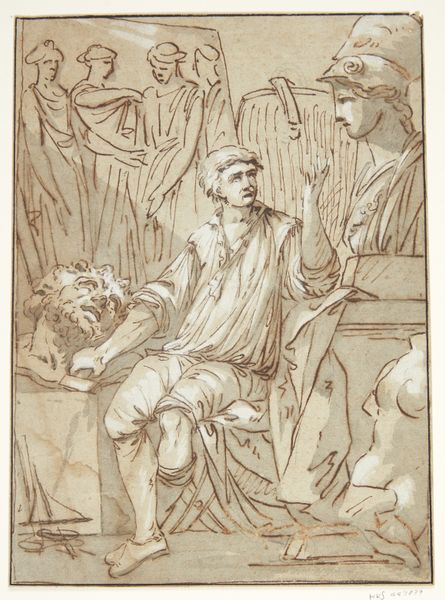
Dimensions: 285 x 192 cm
Copyright: Public Domain
Curator: Philipp Veit created this oil painting titled “Germania” sometime between 1834 and 1836. You can find it here at the Städel Museum. It feels allegorical…a grand, symbolic presentation. Editor: It certainly strikes a mournful tone, doesn't it? There's a stillness to the figure, a sort of burdened melancholy despite the surrounding heraldry and regal symbolism. Curator: Yes, the allegorical Germania embodies that pensive mood. Notice the crown at her feet, along with the collection of shields displaying various crests and symbols of different German states. The wreath on her head suggests virtue and honor, doesn't it? And isn't the eagle shield particularly striking? The sword, too, adds another layer of meaning. Editor: Definitely. That heraldry speaks of a longing for unification, doesn’t it? The multiple shields, all individual, yet presented together, hinting at the tensions of a fragmented nation-state yearning for a cohesive identity. But she isn't a warrior; her sword is balanced on an open book, as if ideas, law, and discussion will create change rather than force. What do you make of the book and the fact that she’s pointing at a page? Curator: It suggests an awareness of history and law, perhaps implying that Germania seeks guidance from past lessons in order to navigate the future of her nation. I am struck by her placement beneath the tree: to me, trees and wreaths suggest rootedness and natural cycles. I am reminded that it embodies a yearning for continuity. Veit links cultural continuity and rooted traditions. Editor: It's compelling how Veit employs classical realism to depict a very contemporary political desire. I read her face as almost passively world-weary – weighed down by generations of conflict but determined, still, to seek answers in the accumulated knowledge. It really does humanize the idea of a nation. Curator: That's a sharp reading. Veit clearly isn’t only representing political yearning, but also individual burden within that context. Editor: Well, this piece does allow one to contemplate how larger cultural forces can be perceived in images as symbols that both conceal and reveal our past and potential. Curator: Indeed. It speaks volumes, and perhaps continues to speak to us even today about Germany’s role and image in the modern world.
Comments
No comments
Be the first to comment and join the conversation on the ultimate creative platform.


